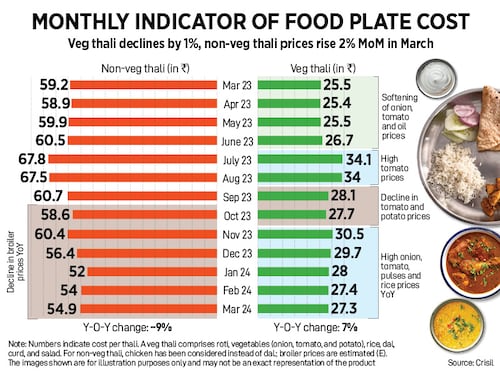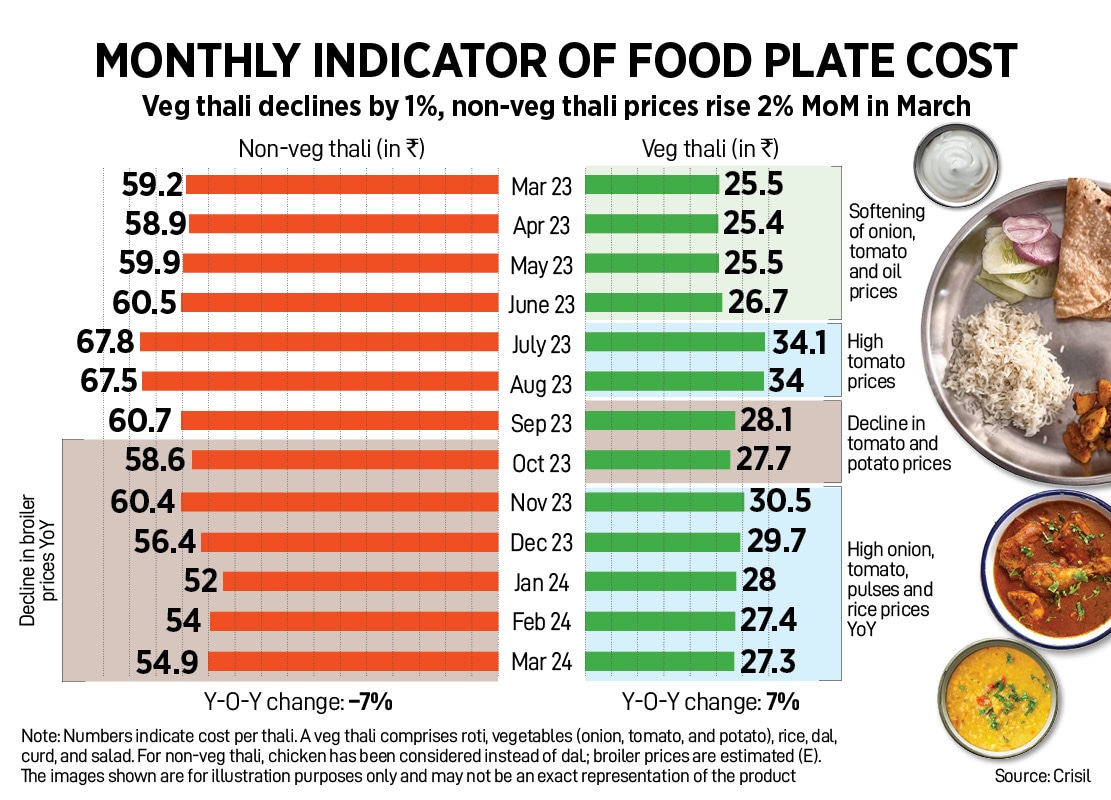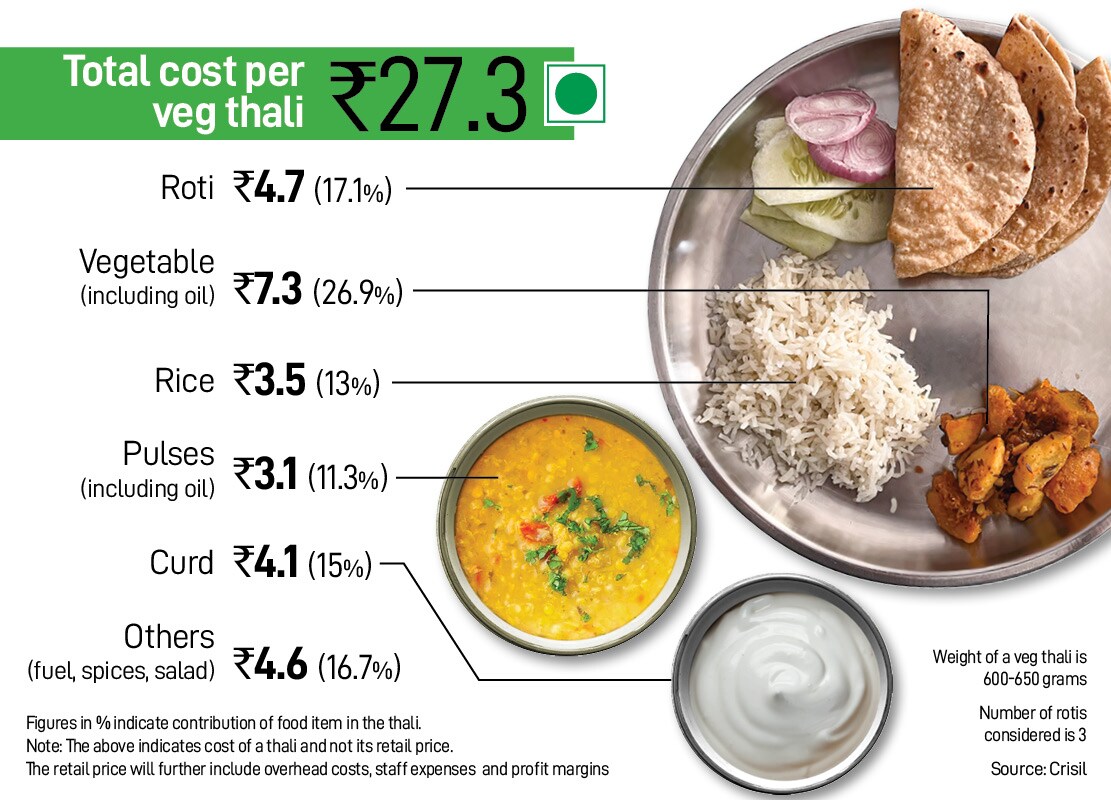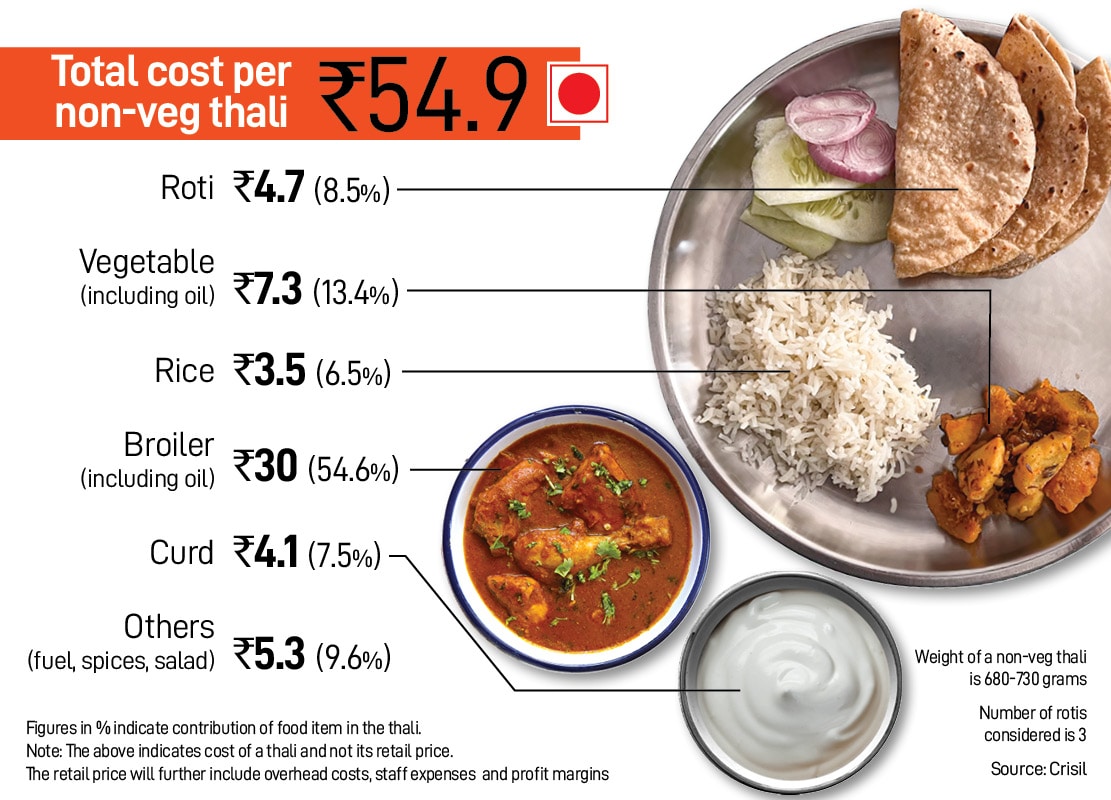How India Eats: Veg thali spikes on tomato, onion, potato prices in March
Cost of key vegetables has been continuously rising. In a year, rates of onion spiked 40 percent, tomato 36 percent while those of potato jumped 22 percent



Home-cooked vegetarian plate got expensive in March as a spike in essential food items like tomato, onion and potato (TOP) continued to be dampener. Food prices have been rising since last July with just one month of easing.
The average cost of the representative home-cooked vegetarian thali increased by 7 percent (year-on-year) in March to Rs27.3 as per Crisil MI&A Research estimates. The same thali cost Rs25.5 in March 2023. However, on a month-on-month basis, the thali’s price has dipped by merely 0.3 percent from Rs27.4.
Reasons for the increase in a vegetarian thali is a sharp jump of TOP prices due to lower arrivals of onion and potato, and low base tomatoes in the last fiscal.
In a year, prices of onion spiked 40 percent, tomato 36 percent while those of potato jumped 22 percent. Amid lower arrivals, prices of rice, accounting for 13 percent of the veg thali cost, and pulses (9 percent) increased by 14 percent and 22 percent year-on-year, respectively.
In contrast, compared to February, cost of the vegetarian thali eased due to a decline of 2 percent month-on-month in prices of tomato. Tomato prices account for 9 percent of the veg thali cost. Also, prices of onion and rice remained flat in March compared to the previous month. However, potato prices were up by 6 percent month-on-month in March due to crop damage, preventing further decline in the thali cost.

The average cost of preparing a thali at home is calculated based on input prices prevailing in north, south, east and west India. The monthly change reflects the impact on the common man’s expenditure. The data also reveals the ingredients (cereals, pulses, broilers, vegetables, spices, edible oil, cooking gas) driving changes in the cost of a thali.
Meanwhile, the average cost of a home-cooked non-vegetarian thali declined by 7 percent in March compared to a year-ago period. The decrease was due to a fall in poultry prices. In a year, poultry prices slipped 16 percent. However, it was the reverse for the cost of non-vegetarian thali compared on a monthly basis, as its overall price jumped 2 percent in March from February.
The cost of the non-veg thali rose due to an estimated 5 percent increase in broiler prices, accounting for 50 percent of the cost, due to higher demand amid Ramazan coupled with rising feed cost.

Inflation in vegetables rose to 30.2 percent in February from 27.1 percent in January, and hardened in several key vegetables, including tomatoes, garlic, cabbage, and cauliflower.
With the rising heat and forecast of higher number of heatwaves in India this summer, it will be key to manage food prices. As water reservoirs are depleting, monsoon will be critical for sowing of essential staple like rice.
(Forbes India"s monthly series "How India Eats" takes a look at how the average price of a food plate in India changes every month, indicating the impact on the common man"s expenditure, by analysing the Indian thali.)
First Published: Apr 04, 2024, 13:13
Subscribe Now